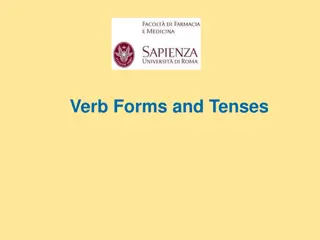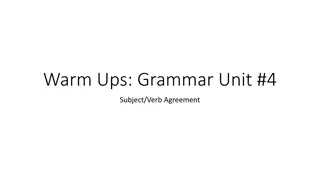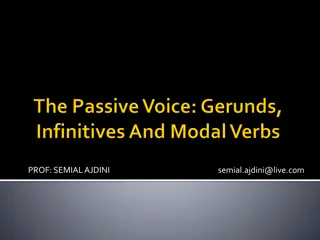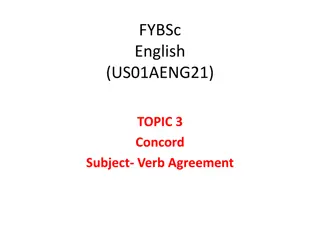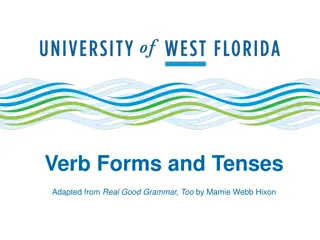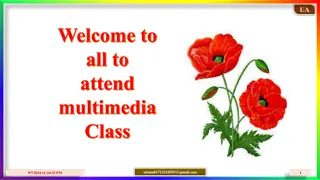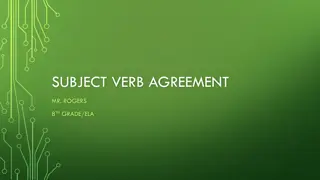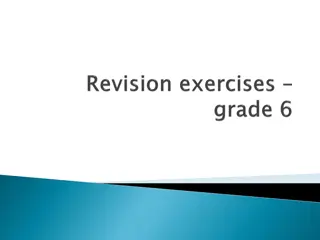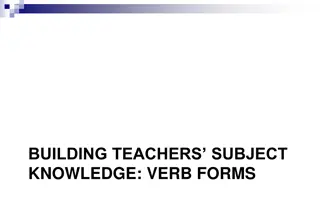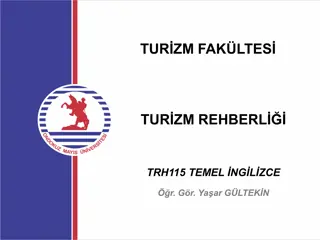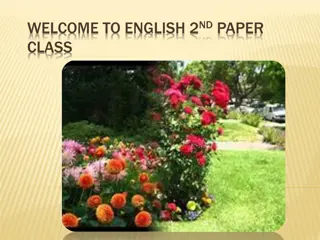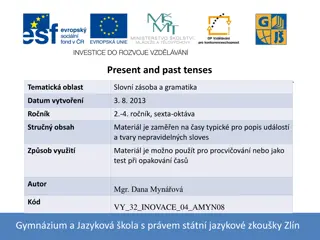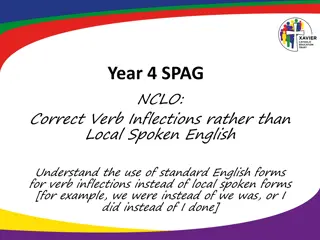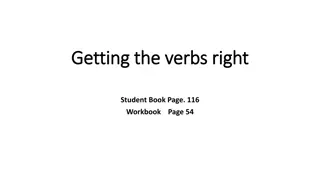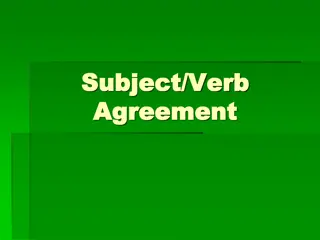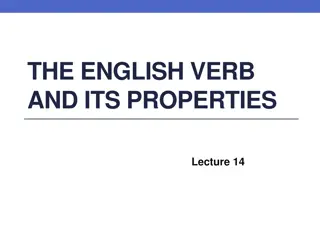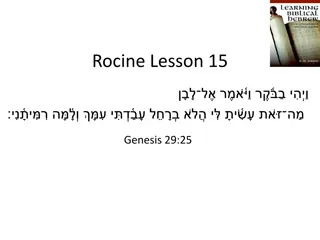English Verb Structure Practice
Practice identifying subjects and verbs in sentences featuring the structure of "to be," "to have," and "to do." Learn about verb tenses, including present continuous, past continuous, present perfect, and past perfect. Explore the correct usage of "have," "has," and "had" as both full verbs and auxiliary verbs. Examine sentences with errors in verb usage to improve understanding.
Download Presentation

Please find below an Image/Link to download the presentation.
The content on the website is provided AS IS for your information and personal use only. It may not be sold, licensed, or shared on other websites without obtaining consent from the author.If you encounter any issues during the download, it is possible that the publisher has removed the file from their server.
You are allowed to download the files provided on this website for personal or commercial use, subject to the condition that they are used lawfully. All files are the property of their respective owners.
The content on the website is provided AS IS for your information and personal use only. It may not be sold, licensed, or shared on other websites without obtaining consent from the author.
E N D
Presentation Transcript
UPPER INTERMEDIATE STRUCTURE TO BE, TO HAVE, TO DO
Underline the subjects once and verbs twice in each following sentence. Then, indicate if the sentences are correct (C) or incorrect (I). 1. Last week went fishing for trout at the nearby mountain lake. (I) 2. A schedule of the day s events can be obtained at the front desk. (C) SUBJECT AND VERBS A SENTENCE IN ENGLISH MUSH HAVE AT LEAST ONE SUBJECT AND ONE VERB.
1. A job on the day shift or the night shift at the plant available. 2. the new computer program has provided a variety of helpful applications. 3. the book can be opened only with a special screwdriver. 4. Departure before dawn on a boat in the middle of the harbor. 5. yesterday found an interesting article on pollution. SUBJECT AND VERBS A SENTENCE IN ENGLISH MUSH HAVE AT LEAST ONE SUBJECT AND ONE VERB.
BE, HAVE, DO BE? HAVE? DO?
BE 1. Be followed by Complement - Be+ Adjective - Be+ Noun - Be + Pronoun. 2. Be followed by Verb 3 (past participle)------- passive sentence 3. Be followed by Verb ing (present and past continuous) 4. There is, there are, there was, there were
HAVE, HAS, HAD 1. Have as a full verb S+ have/has+ Noun-------- meaning possess and is similar to own 2. Have as full verb meaning eat or enjoy e.g. Have another sandwhich 3. Have as auxiliary verb S+have/has+ v3 (past participle)--------------- present perfect S+had+ v3 (past participle)--------------- past perfect S+ have/has/had+ to+ verb---------------- obligation, similar to must
EACH OF THE FOLLOWING SENTENCES CONTAINS A VEVRB IN THE PAST OR A PAST PARTICIPLE.THEN, INDICATE IF EACH SENTENCE IS CORRECT (C) OR INCORRECT. 1. the young girl drunk a glass of milk. 2. before she left, she had asked her mother for permission. 3. the secretary has broke her typewriter. 4. the installer should have completes the task more quickly. 5. he has often becomr angry during the meetings 6. she has rarely rode her horse in the park.
UNDERLINE THE VERBS IN THE FOLLOWING SENTENCES. THEN, INDICATE IF EACH SENTENCE IS CORRECT (C) OR INCORRECT (I) 1. I have gave you all the money I have. (I) 2. The articles were put in the newspaper before he was able to stop production 3. All the tickets for the concert might already be sold. 4. The deposit will has to be paid before the apartment can be rented. 5. He thought that he should have be invited to attend the conference. 6. Before the speaker finished, many guests had rose from their seats and started for the door.
CHOOSE THE LETTER OF THE UNDERLINED WORD OR GROUP OF WORDS THAT IS NOT CORRECT. 1. Alice in Wonderland, first published in 1865, has since being translated into thirty A B C D languages. 2. The peace Corps was establish on March 1, 1961, by President John F. Kennedy. A B C 3.The idea of using pure nicotin to help smokings stop was first tries in the mid-1980s A B C D with the nicotine-laced chhewing gum Nicotette. 4. Nails are commonly make of steel but also can contain substances such as alumunium A B C D or brass
5. A patient suffering from amnesia may had partial or total loss of memory A B C D 6. Before he died, Linus Pauling had wins two Nobel Prizes A B C D


